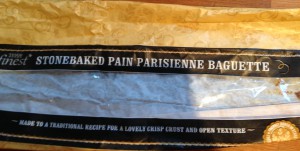Using little-known foreign words in advertising can make a product appeal to a certain clientele who understands the word or at least associates it with a particular culture. It can distinguish the brand as global and trend-setting.
Languages incorporate ‘foreign words’ all the time. At first, the use of a new word may be only between speakers of the source language who know the word, but at some point they begin to use the word with those to whom the word was not previously known. To these speakers the word may sound ‘foreign’. At this stage, when most speakers do not know the word and if they hear it think it is from another language, the word can be called a foreign word. There are many foreign words and phrases used in English such as bon vivant (French) and Schadenfreude (German), as well as many types of foreign food, such as pain parisien (French).
As more speakers become familiar with the new foreign word, its usage can grow to a point where people who know little or nothing of the original language understand the word, even using the word themselves. The new word becomes conventionalised, and we can then call it a loanword. The word baguette (French) is an example of this.
However, foreign words must be used correctly when inserted into English, otherwise the intended effect will backfire, and instead of looking fancy and educated, the user looks a bit silly and misinformed. Morrisons made the “better safe than sorry” decision to avoid loanwords when naming their baguette, calling it a “French Stick”.
Recently I purchased a nice “stonebaked pain parisienne baguette” from Tesco during my online shop. I was slightly confused as to whether it would be a baguette or a pain parisien. A pain parisien, also called a flûte, is a long bread, similar to a baguette, but more rounded and approximately 400 grams in weight, compared to the baguette‘s average of 250. A pain parisien, then, is not the same thing as a baguette.
So, Tesco. Is it a pain parisien or a baguette? Also: why is it spelled parisienne instead of parisien? Parisien modifies pain (masculine), not baguette (feminine). What happened? Did someone suggest a “stonebaked pain parisien”, and then someone else thought that your clientele might not understand what that was, plonking “baguette” on the end?
In-store, customers would understand what a “stonebaked pain parisien” was, as they could see it. Online, there are photos of the breads, so even if shoppers weren’t entirely sure what it was, they would have a general idea.
7 August 2015 13:18

